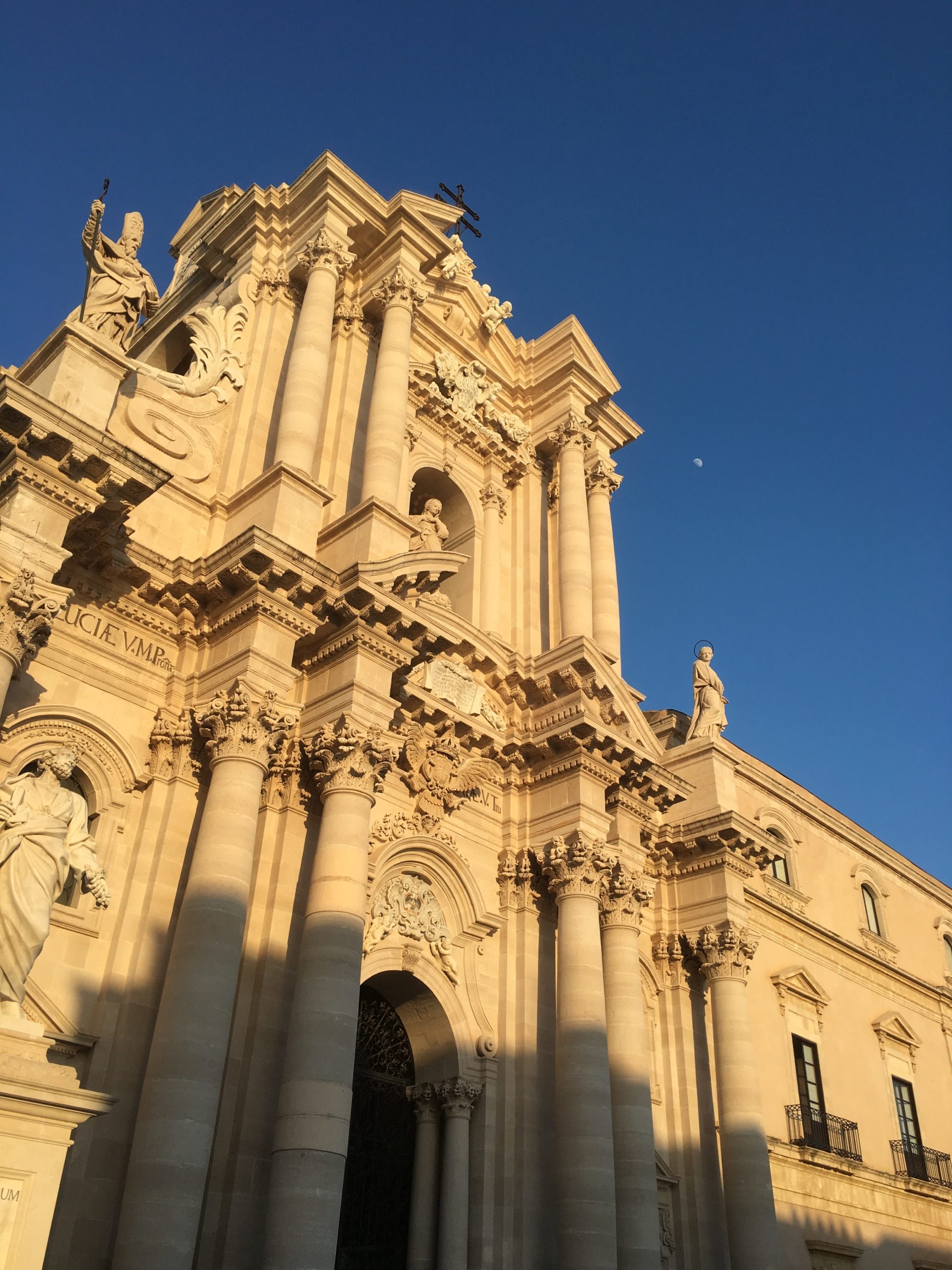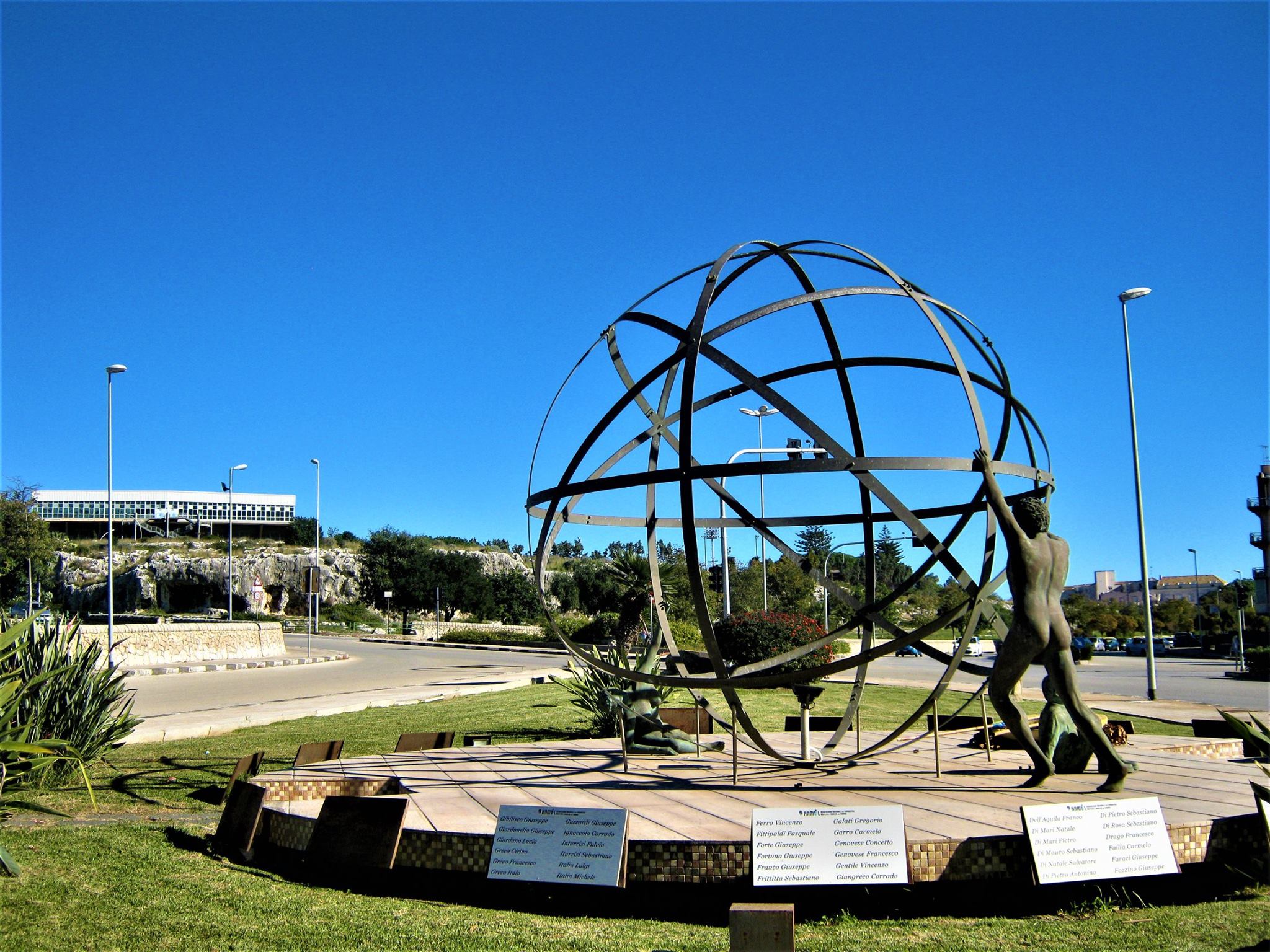Athenaion – The Cathedral of Syracuse
The Cathedral Siracusa is an authentic exhibition of art history; it offers the viewer a richness of styles ranging from the Greek temple to the Byzantine basilica, from Norman reconstructions to Baroque additions.
The Cathedral sits on the highest point of Ortigia, a sacred site par excellence since the origins of Syracuse and where excavations carried out in the twentieth century have brought to light the remains of other places of worship, including an archaic Athenaion. It was by destroying and covering every previous structure that the tyrant Gelone had the Doric temple of Athena (Athenaion) built to celebrate the victory of Syracuse against the Carthaginians in the battle of Imera (480 BC). The splendour and richness of the temple were also documented by Cicero who went to Syracuse to recount the thefts of the Roman governor Verre. It was in fact following the Roman conquest that the Athenaion experienced a period of decline.
From the sixth century began the work of modification that led to the Doric temple to take on more and more the appearance of a Byzantine basilica with three naves. To achieve this, the space between the columns was walled up while the cell (the inner part of the temple) was covered and eight arches were opened on each side. In order to adapt the temple to the new needs of Christian worship, the orientation was also changed: to the east, where the ancient prospectus was, three apses were created while on the west side the new facade was raised. The new Byzantine basilica, built on the temple of Athena, was then dedicated to the Mother of God.
In 640 A.D. Bishop Zosimo moved the cathedral from its original seat of San Giovanni to the new seat in Ortigia.
There is no certain information about the conversion into a mosque under Arab domination and in any case the structure was not altered.
With the arrival of the Normans, who drove the Arabs out of Sicily and Syracuse, the Cathedral was used again for Christian worship and some changes were made. The walls of the central nave were raised and windows opened. The façade of the church was also renovated, providing it with a Gothic portal, a rose window and a bell tower. Many written records speak of the appearance of the Cathedral of Syracuse in this period, but it has not been handed down any image, especially not the bell tower that was damaged by the earthquake of 1542 and later totally destroyed, and never rebuilt, by the earthquake of 1693 during which also the ancient Norman facade collapsed.
In the eighteenth century the Trapani architect Andrea Palma won the competition for the construction of the new facade that was erected between 1728 and 1754.
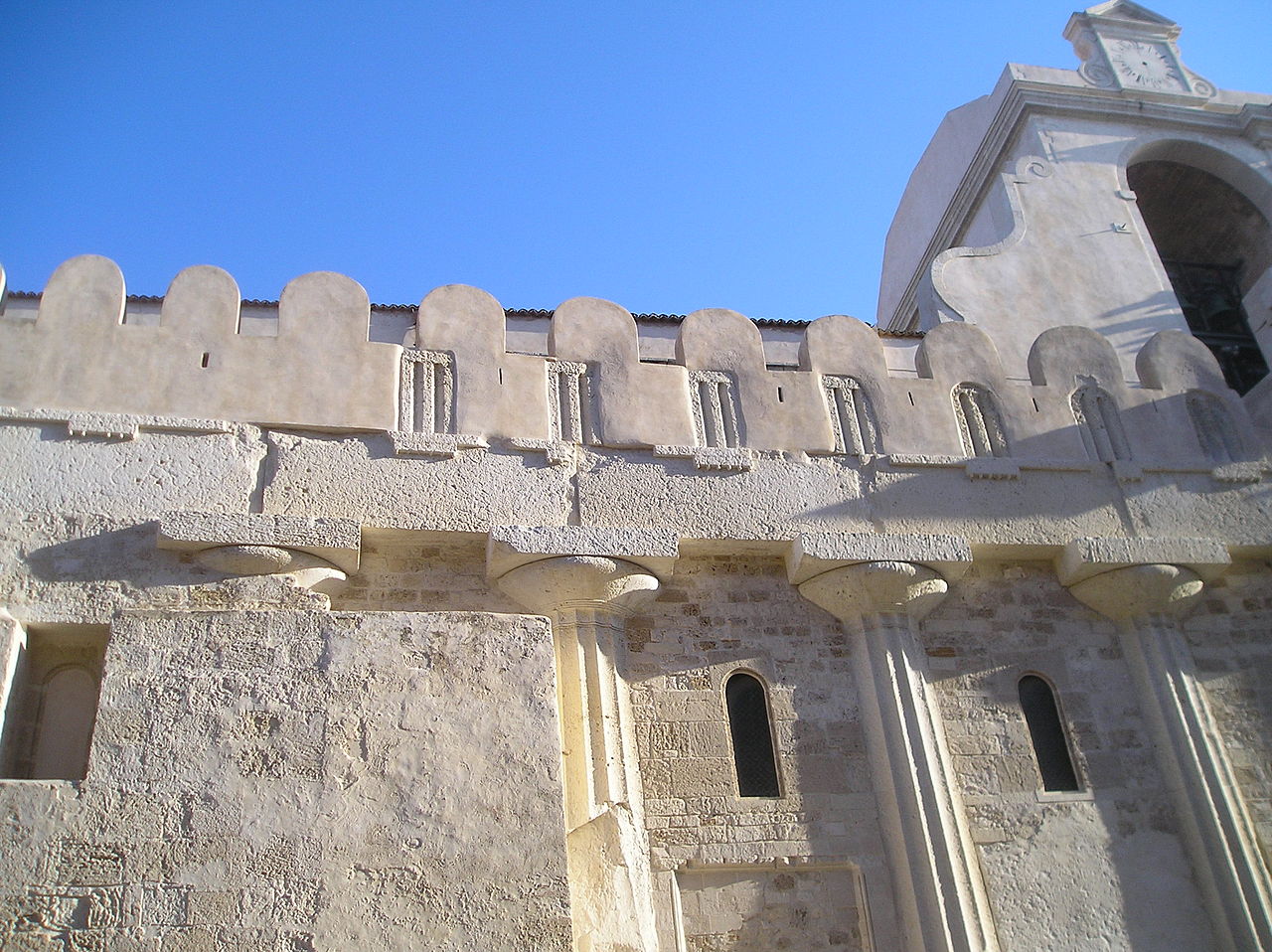
THE FACADE
The facade of Ortigia Cathedral constitutes one of the highest Baroque testimonies in Syracuse. Every architectural trace of the Greek temple was concealed, however, the temple resurfaces on the northern (left) side from which emerge the austere Doric columns in contrast with the main facade. On this side there is also a secondary door that gives access to the interior of the Duomo. The upper lateral part instead has a bell tower, built in the same eighteenth-century period of the facade. The right side part is not visible because it is covered by the building of the Archbishop’s Palace of Syracuse (1854). The rear part of the Duomo has been covered by successive constructions.
The baroque façade stands on two superimposed orders, outlined by frames and Corinthian columns and crowned by a pediment. Several statues by the Palermo sculptor Ignazio Marabitti decorate the façade. San Pietro (left) and San Paolo (right) flank the staircase that precedes the Duomo. Inside the aedicule in the centre of the second order of the façade there is a limestone statue of the Virgin of the Pilier (to whom the cathedral of Syracuse is consecrated), while the two side statues represent Saint Martian, first bishop of Syracuse, and Saint Lucy, martyr of Syracuse and patron saint of the city.
Through three portals closed by wrought iron gates, you enter the VESTIBULE obtained by doubling the facade and in front of a second prospectus more austere and linear than the first. The entrance portal is flanked by two twisted columns adorned with vines in relief, a frequent motif of Sicilian Baroque. Crossing the entrance portal you can immediately admire the two large Doric columns of the ancient opisthodome (the back) of the temple of Athena.
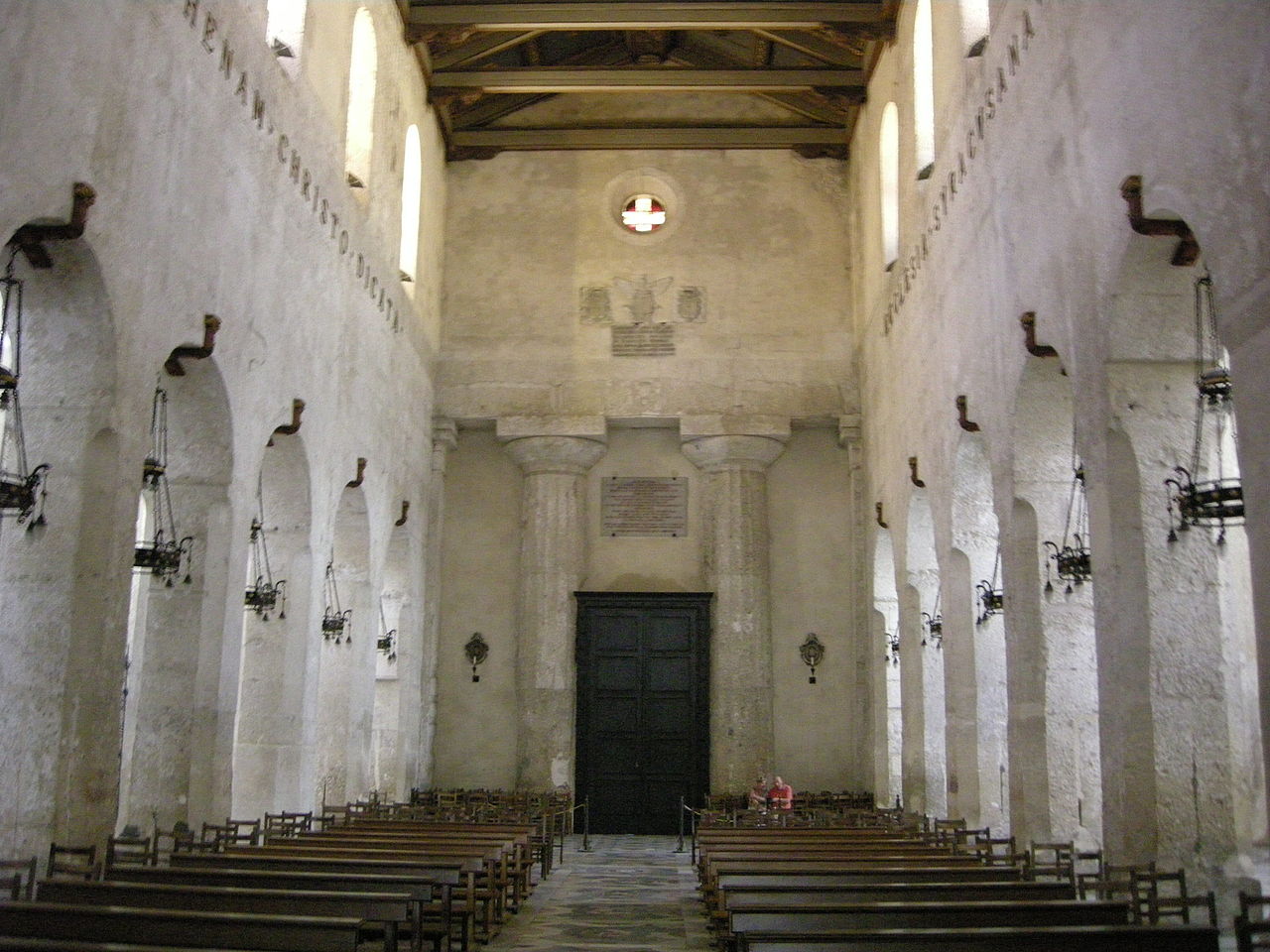
RIGHT NAVE
The first chapel in the right aisle is that of the Baptistery, which contains a majestic Greek vase from the Hellenistic period (3rd century BC) adapted as a baptismal font, resting on a large marble capital from the Norman period surrounded by seven bronze lions from the 13th century. On the sides there are Norman mosaics from the 12th century that once decorated the apse. From this chapel you can access the rooms of the Archiepiscopal Palace, communicating with the Cathedral, where there is the “Luciano Museum” dedicated to Saint Lucia with relics that belonged to the Saint, Ex-voto donated by the devotees and many pictorial and photographic representations of the periodic feasts dedicated to the patron saint.
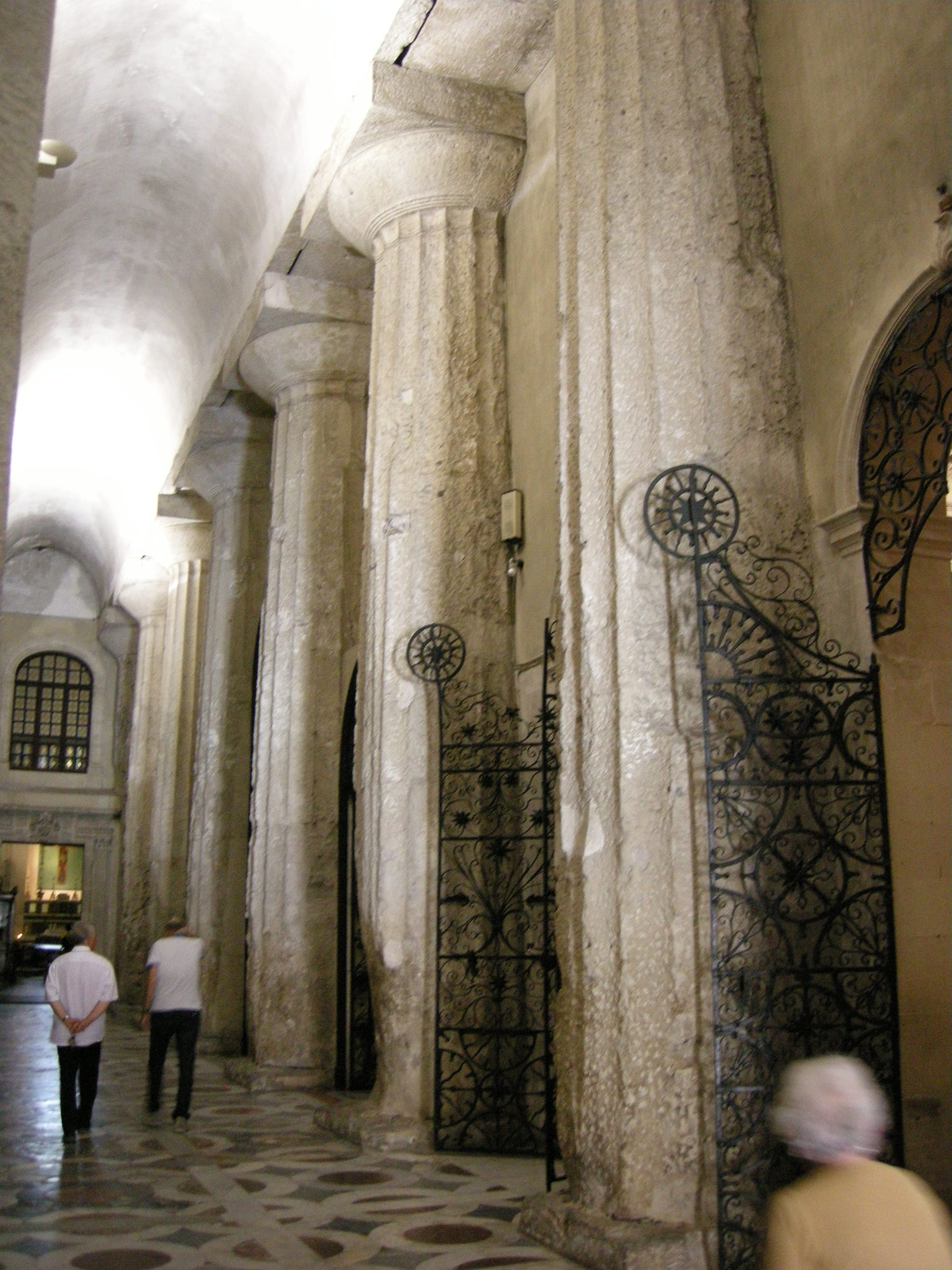
The following chapel, with a square dome plan, is dedicated to Saint Lucia. It was designed by the Syracuse architect Pompeo Picherali and built in 1711. In the centre of the chapel there is an altar behind which there is a painting by an unknown artist from the 13th century depicting the Virgin of Syracuse. Behind the painting there is a niche containing the silver statue of Saint Lucia, the work of the goldsmith Pietro Rizzo (1599) and a masterpiece of Sicilian goldsmithing. The statue rests on a silver case also dating from the early 1600s, attributed to Nibilio Gagini. It is composed of six panels depicting episodes from the life of the martyr, while the front panel reproduces the painting by Caravaggio Il Seppellimento di S. Lucia. The simulacrum is carried in procession twice a year, on December 13 (from the cathedral to the church of Santa Lucia extra moenia) and on the first Sunday in May. Being the most precious work in the Duomo, during the rest of the year the simulacrum is kept closed inside the niche closed by a sturdy iron gate.
Afterwards, the baroque chapel of the Blessed Sacrament, is considered the most beautiful of the Cathedral of Syracuse. It was built in the seventeenth century by the Vermexio brothers, has an octagonal plan and is adorned with bas-reliefs and columns in Corinthian style with gilded finishes. The polychrome marble tabernacle is by Luigi Vanvitelli (the architect of the Royal Palace of Caserta). On the sides of the altar there are two portals with elaborate sculptural decorations that lead to the Sacristy of the Cathedral. The dome preserves the frescoes by Agostino Scilla with scenes from the Old Testament.
The last one is the chapel of the Crucifix, situated at the end of the right aisle as an extension of the Byzantine apse. To build it in 1692 the last three columns of the pronaos (front part) of the Greek temple were demolished. The chapel has three altars dedicated to the Holy Crucifix, to Saint Martian and to the Immaculate. On the left wall there is also an altarpiece depicting San Zosimo attributed to Antonello da Messina; on the right wall there is a panel of the Antonellian school depicting San Marziano. The right door leads to the Sacristy from where you pass into other rooms that contain the treasure of the Cathedral where they are kept sacred objects of great value.
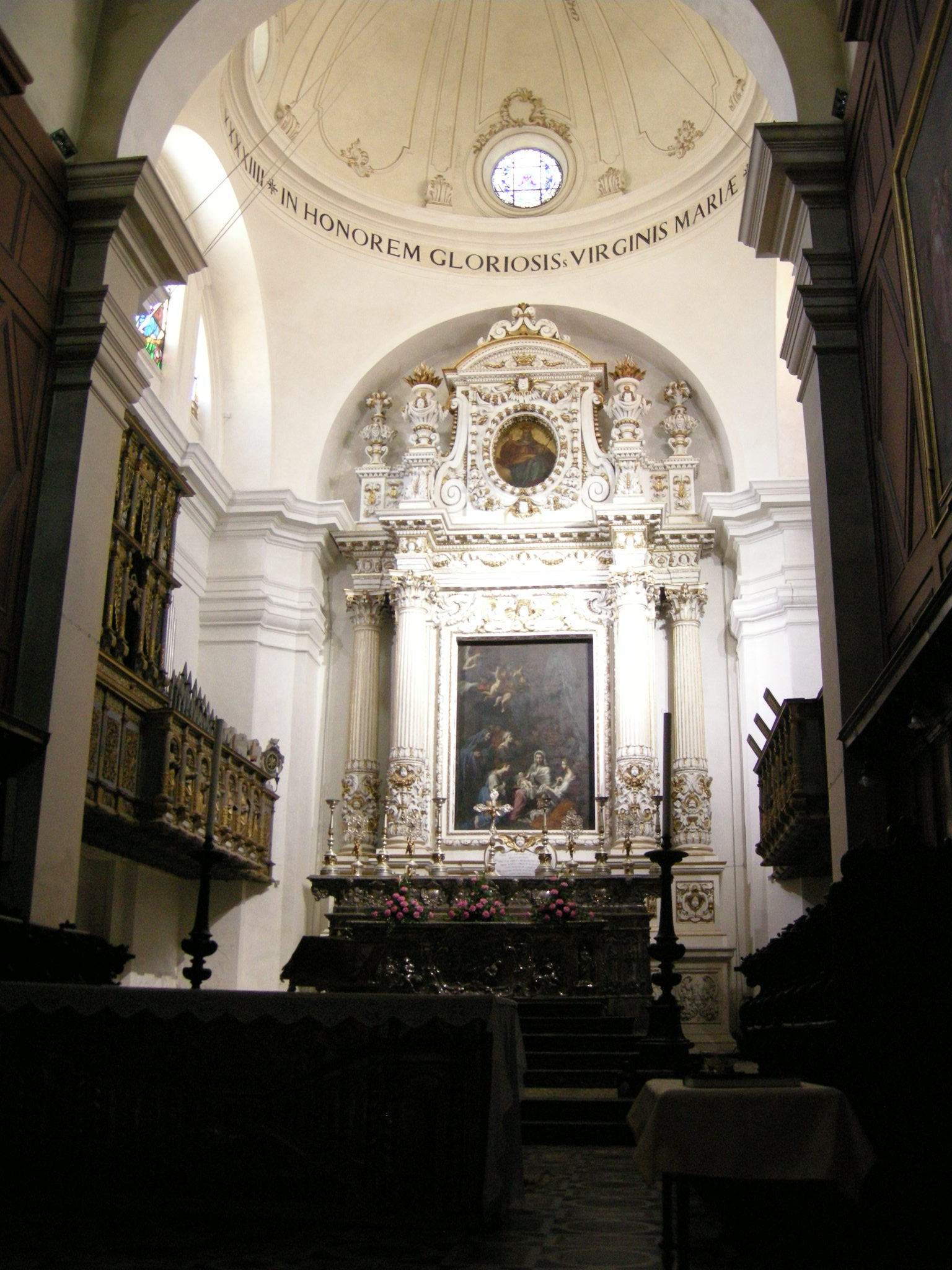
ENTRAL NAVE
The central nave, obtained by creating openings in the thick walls of the ancient Doric temple, is shown in all its austerity, in contrast with the richness of the presbytery. Around the walls of the cell there is an inscription that recalls the apostolic origins of the Syracuse church. The ceiling dates back to 1518 and is made up of sturdy wooden boards with beams. The polychrome marble floor was restored in the second half of the nineteenth century and shows the ancient coat of arms of the city, a crenellated tower in a Sicilian shield.
In the baroque style presbytery, there are two 17th century choirs in carved wood, one of which serves to support the recently restored Duomo organ. The high altar, of 1659 and attributed to Giovanni Vermexio, is made on one of the monoliths of the frieze of the Greek temple, collapsed during the earthquake of 1693. In the centre of the apse, there is a seventeenth-century painting depicting the Nativity of Mary, perhaps the work of Agostino Scilla.
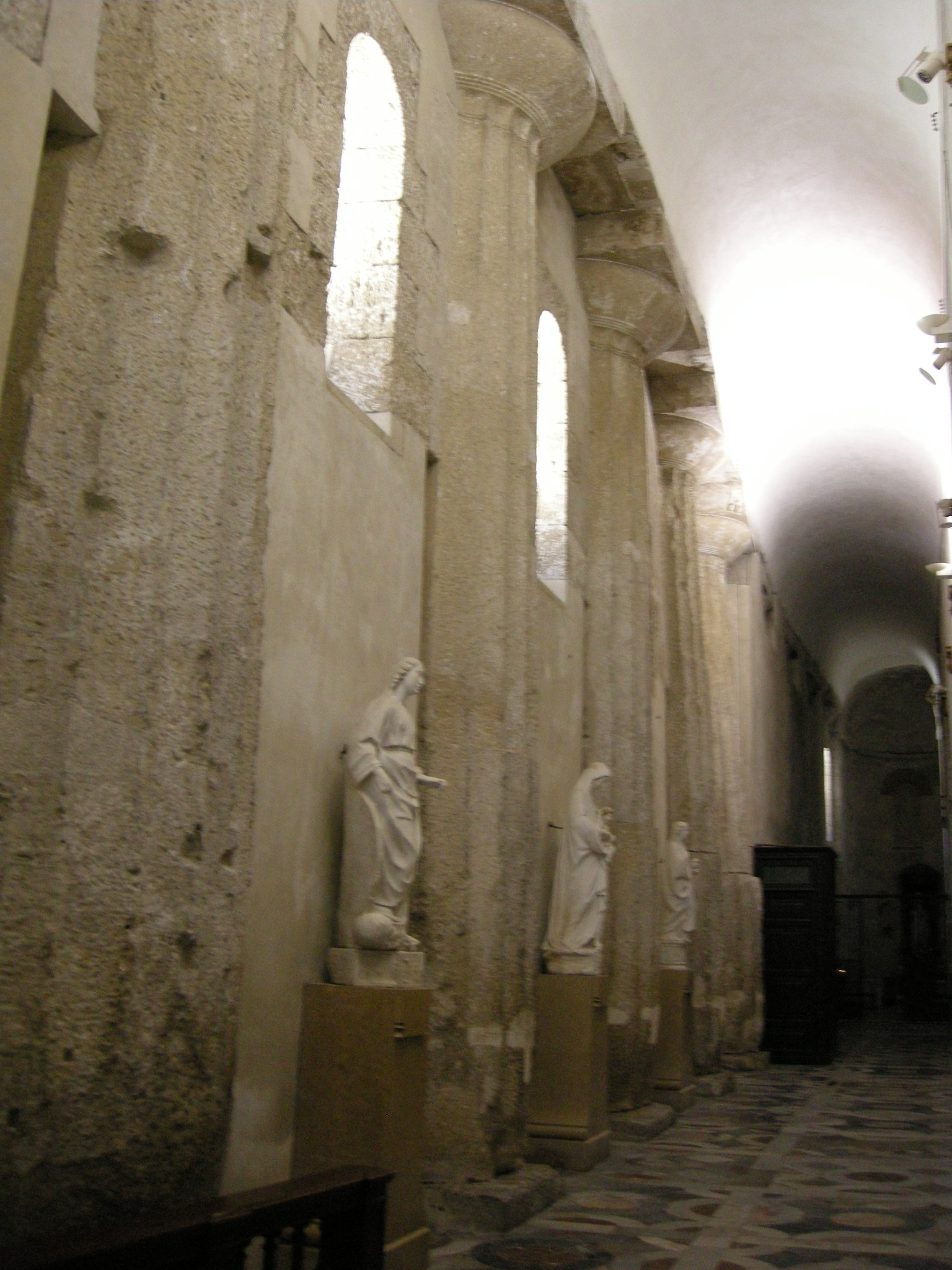
LEFT NAVE
The left nave recreates the character of the Byzantine basilica, devoid of ornaments and friezes and enriched, between one column and another, by three sixteenth-century statues of the Gagini school: Saint Catherine of Alexandria, Madonna and Child and Saint Lucia. The capitals of the ancient Doric columns can be seen emerging from the walls of reinforcement added after the displacement of drums caused by the earthquake of 1542.
At the extremity of the left nave, past the statues and the sturdy Doric columns, there is the only remaining apse of Byzantine origin. Inside there is a statue of the Madonna della Neve, to which the chapel is dedicated, by the sculptor Antonello Gagini.
OPENING HOURS AND PRICES
Location: Piazza del Duomo – Isola di Ortigia – Siracusa
Contacts.: +39 0931 65328
First Sunday of each month free entry.
Entry ticket: Adults € 2.00 – Reduced € 1.00 – Sunday free entry
BOX OFFICE OPENING HOURS: Every day from 10 a.m. to 6.30 p.m.

